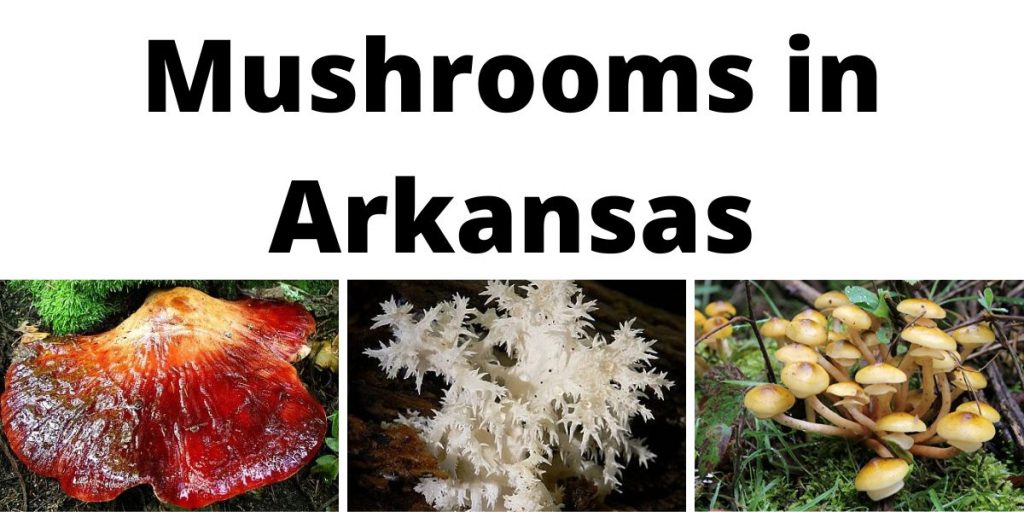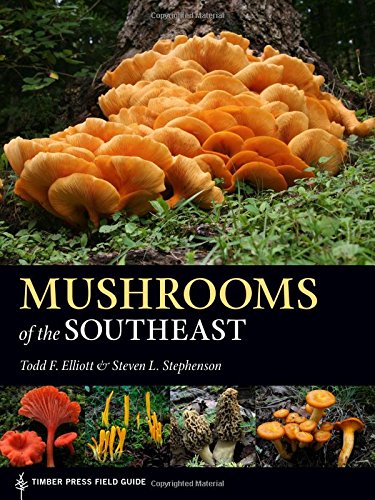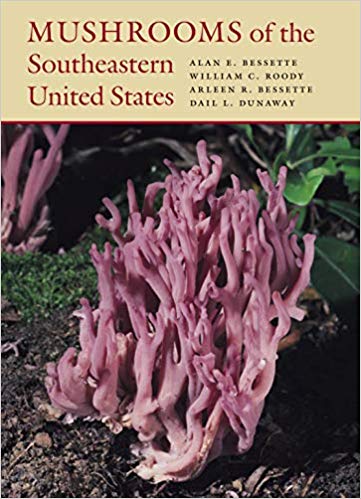The State of Arkansas has unusual geographic variety combined with many natural areas open to the public. Accordingly, the state has a lot of mushrooms[i]. We can’t describe all of them, but can give you a quick introduction to some of the more interesting species.
Lots of mushrooms are safe to eat, and some are delicious, and foraging for mushrooms is not as difficult as some people make it out to be—but it’s not as easy as others make it out to be, either. For one thing, there are a lot of species that are safe to eat sometimes and under some circumstances, but not otherwise—and it’s not always clear why. So there is definitely a learning curve. Foraging for mushrooms is not something you can learn from an internet article.
But you can learn it, and we can give you a couple of reasons why you might want to.
If you do indeed go Mushroom Hunting make sure you have the proper tools, take a quality knife with you and a basket/bag for your haul!
This list is not meant to be used as a replacement for a field guide, spore prints, an identification app or an in person guide.
The point of this article is not to teach you to forage; it’s to give you a reason to learn.
Our Recommended Field Guides for Arkansas
COVER | TITLE | Header | ||
|---|---|---|---|---|
OUR #1 RATED | ||||
Edible Mushrooms in Arkansas
Honey Mushroom (Amillaria sp.)
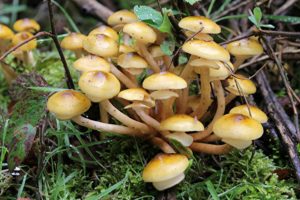

Honey mushroom doesn’t taste like honey (it’s named for its color), but reportedly it does taste good. Unfortunately, honeys do resemble quite a lot of other small, brown mushrooms, some of which are dangerously toxic. Worse, a few of the people who eat honeys get sick, and so far and nobody knows why[ii]. Some experts no longer recommend them as food—but others still do.
Arkansas seems to have multiple honey species, but honey taxonomy is a mess, so it’s really hard to say[iii].
Boletes


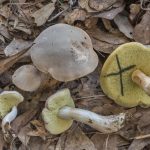

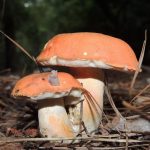



The boletes are united by having both the classic umbrella-like mushroom shape and, instead of gills, a layer of pores. They were once classified together in one single, giant genus, but have since been split up. In fact, some bolete species still have their scientific names changed so often that we’ve decided to leave out those names lest we add to the confusion.
The Old-Man-of-the-Woods[iv] is very distinctive-looking, resembling a pine-cone or perhaps some strange stuffed animal, but it tastes merely OK. The Pallid Bolete[v] has a pale, washed-out appearance but is choice. The Burnt-Orange Bolete[vi] is, indeed, orange when young, though the color fades as a specimen gets older. The flavor is variable and can be bitter. Suillus hirtellus[vii] has no common name, but its scientific name seems relatively stable. It’s a drab, yellowish-brown, slimy when moist, and considered good but not great.
Abortive Entoloma (Entoloma abortivum)
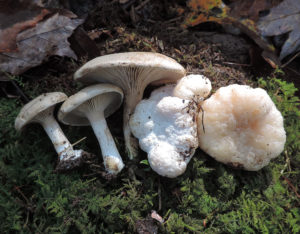

There are twisted, white, popcorn-looking things that were for years assumed to be Entolomas that somehow didn’t make it—they often showed up near normal-looking Entoloma mushrooms, after all. The species of Entoloma in question was therefore dubbed the aborted entoloma. Then someone found honey-mushroom cells inside the popcorn-things. Had some honey mushroom attacked and aborted the poor, innocent Entoloma?
Nope[viii].
Turns out, the Entoloma is the attacker—the popcorn-things are honey-mushrooms that have been attacked. The popcorn-things are still often referred to as “aborted entoloma,” the same common name applied to the Entoloma species causing the trouble—a bit like using the same name for both a lion and his dinner. In any case, both the Entoloma and its dinner are edible by humans, but they should only be harvested if found together. Either has too many toxic look-alikes to be trusted if found without without the other to attest to its identity[ix].
Fried Chicken Mushroom (Lyophyllum decastes)
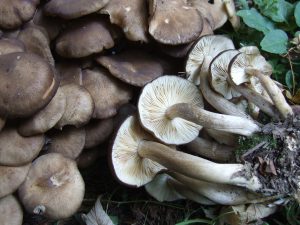

This one[x] is actually a “species complex,” meaning a knot of closely-related, nearly identical species whose taxonomy has not been sorted out yet. It’s not entirely clear that all the species in this knot are safe to eat, but some appear to be choice. Why it’s called fried chicken isn’t clear.
Beefsteak polypore (Fistulina hepatica)


As the common name suggests, the beefsteak[xi] looks a lot like a hunk of red meat—it even leaks red fluid when sliced. The flavor is slightly (and pleasingly) sour. Unlike most mushrooms, it not only can be eaten raw but should be, as cooking degrades its texture. The beefsteak is a rare find, one of the species a forager might look for a long time without finding.
Chicken-of-the-Woods (Laetiporous sp.)


Chicken-of-the-woods is well-known as an easy-to-recognize, choice edible, ideal for beginning foragers—except none of that is exactly true. Chicken is another species complex. Some members of the group are choice, others are tough and not entirely palatable, and some are at least mildly toxic. Differentiating among the various chickens is not that difficult for experienced foragers, and knowing where in the country you are and what kind of tree the fungus is fruiting from will tell you which chicken it is in most cases. But the whole thing could well confuse beginners, and it’s difficult to learn much about the various chickens because many authors still treat them all as the same species.
Hericium sp.
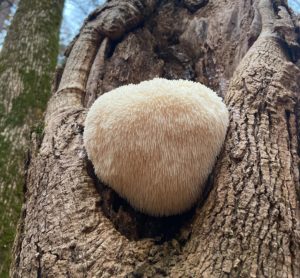

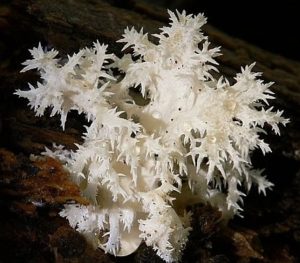

Lion’s Mane (Hericium erinaceus) is well-known for being both odd-looking and delicious. It is large and club -shaped and covered all over with long, white or whitish, hairlike spines. It tastes rather like crab meat. It’s also reputed to have medicinal value. Oddly, many writers treat all Hericiums as though they were medicinally interchangeable, something there is no evidence for, but reputedly they are all safe to eat and taste similar. Arkansas has at least one other member of the group, H. coralloides, which branches repeatedly and has much shorter spines. It should not be confused with the Coral Mushroom, which bear it a superficial similarity but have no spines.
Our Recommended Field Guides for Arkansas
COVER | TITLE | Header | ||
|---|---|---|---|---|
OUR #1 RATED | ||||
Poisonous Mushrooms in Arkansas
The following list is by no means exhaustive—there are plenty of poisonous mushrooms in Arkansas not on the list. Some poisonous mushrooms merely cause illness. Others can cause death. Some almost certainly will kill anyone who eats them. Some poisonings occur when people simply eat mushrooms without knowing what they are. Others happen when people misidentify mushrooms. Misidentification is especially likely for inexperienced foragers who aren’t used to noticing important mushroom details yet—but it’s not uncommon for very knowledgeable people to poison themselves from inattention or wishful thinking.
Caution, knowledge, and attention to detail are what make mushroom foraging safe.
Amanita sp.
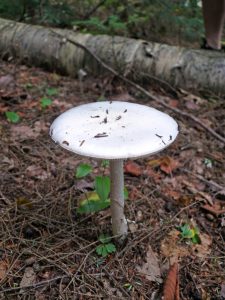

The Amanitas are an interesting group of mushrooms. Most are quite pretty. Some are safe to eat. Some are psychoactive (and poisonous, if not processed properly). Some kill most of the people unlucky enough to eat them. Arkansas has a variety of Amanita species, but most are poorly known. At least one member of the aptly-named Destroying Angel group is present[xii] in the state, but it’s difficult to find information on which destroying angel it is.
False Parasol (Chlorophyllum molybdites)
Actually, the false parasol is a true member of the Shaggy-Parasol group, it’s just the most frequently poisonous of this rather ambiguous bunch. It won’t kill you, but it’s responsible for more mushroom poisonings than any other species in the country.
Russula sp.
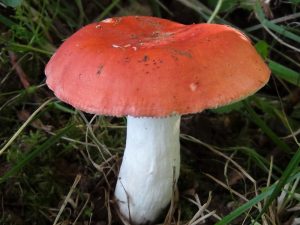

Russula taxonomy is, evidently, a giant mess[xiii]. Seriously, identifying Russulas to species is what mycologists do when they haven’t had enough stress in their lives recently. However, many of the red ones will make you puke if you eat them, so just call all of those “The Sickener,” admire them for being pretty, and leave them be.
Our Recommended Field Guides for Arkansas
COVER | TITLE | Header | ||
|---|---|---|---|---|
OUR #1 RATED | ||||
Magic Mushrooms in Arkansas
Using magic mushrooms can be very dangerous—not so much because of the psilocybin (though use of that substance is not entirely risk-free), but because of legal issues and identification challenges.
Possession or use of psilocybin in any form is illegal at both the state and Federal level. In Arkansas, you could go away for life[xiv].
And those who brave the law and go out hunting for wild magic[xv] have to deal with the fact that psilocybin-containing mushrooms are small, brownish, nondescript mushrooms, as are several very dangerous poisonous species. It’s definitely not OK to harvest something because it looks like those things your brother grows—every mushroom headed for a human mouth must be properly identified by an expert first.
The point is, be careful. We don’t like losing readers.
Gymnopilus sp.
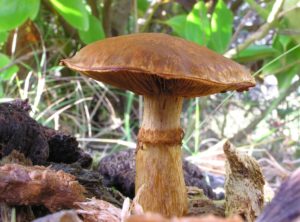

The “gyms” are not very well known, as psychoactives go, but people who try them tend to go all giggly—hence the nickname “Laughing Gym” for one species. The taxonomy is a bit confused, though, so it’s hard to be sure which species Arkansas really has.
Banded Mottlegill (Panaeolus cinctulus)
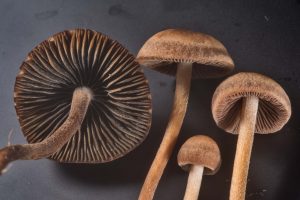

The “mottlegill” part of the name is because the spores mature and darken unevenly, so the gills go through a mottled stage. “Banded” is because there is a paler band around the rim of the cap. This widespread species is moderately potent, but the mottlegills as a group vary from extremely potent to not psychoactive at all. Curiously, psychonauts tend not to use the lovely name, mottlegill. They just call these mushrooms “pans.”
Shroom (Psilocybe cubensis)
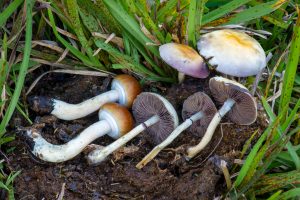

Officially, this one doesn’t seem to have a common name, but it is the one people usually mean when they talk about “shrooms,” so perhaps that counts? This species is among the most popular psychoactives in the world, in part because it is relatively easy to cultivate. Most named varieties of magic mushrooms (e.g., Penis Envy, Golden Teacher, PF Classic) are cultivated strains of P. cubensis. In Arkansas, it grows wild.
Big Bluefoot (Psilocybe ovoideocystidiata)
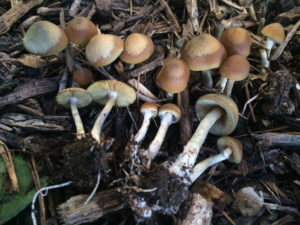

There are two Psilocybes that look almost exactly alike. They are, accordingly, both called Bluefoot, after the bluish tinge to the base of the stem. Fortunately, they are similar in potency, so mistaking one for the other is not a big problem, and anyway, there are a few differences. This one is bigger, for example, and it’s definitely in Arkansas. The other is widespread but hard to find.
Our Recommended Field Guides for Arkansas
COVER | TITLE | Header | ||
|---|---|---|---|---|
OUR #1 RATED | ||||
References:
[i] (n.d.). Hot Springs National Park: Arkansas Fungi. iNaturalist
[ii] (n.d.). Armillaria mellea (Vahl) P. Kumm.—Honey Fungus. First Nature
[iii] Kuo, M. (2017). Armillaria mellea. MushroomExpert
[iv] (n.d.). Strobilomyces strobilaceus (Scop.). –Old Man of the Woods. First Nature
[v] Bergo, A.(n.d.). Boletus pallidus. Forager/Chef
[vi] (n.d.). Tylopilus bolloui (“Burnt Orange Bolete”). The Bolete Filter
[vii] (n.d.). Suillus hirtellus. The Bolete Filter
[viii] Kuo, M. (2014). Entoloma abortivun. MushroomExpert
[ix] Bergo, A. (n.d.). Shrimp of the Woods: Aborted Entoloma Mushrooms. Forager/Chef
[x] Wood, M., Stevens, F. (n.d.). California Fungi—Lyophyllum decastes. The Fungi of California
[xi] Bergo, A. (n.d.). The Beefsteak Mushroom. Forager/Chef
[xii] (n.d.). Plant of the Week: Mushroom, Death Angel (Destroying Angel). University of Arkansas Extension
[xiii] Kuo, M. (2009). The Genus Russula. MushroomExpert
[xiv] Dubley, P. (2022). Are Psychedelics Legal in Arkansas? Tripsitter
[xv] (n.d.). Which Psilocybin Mushroom Grow Wild in My Area? Shroomery


